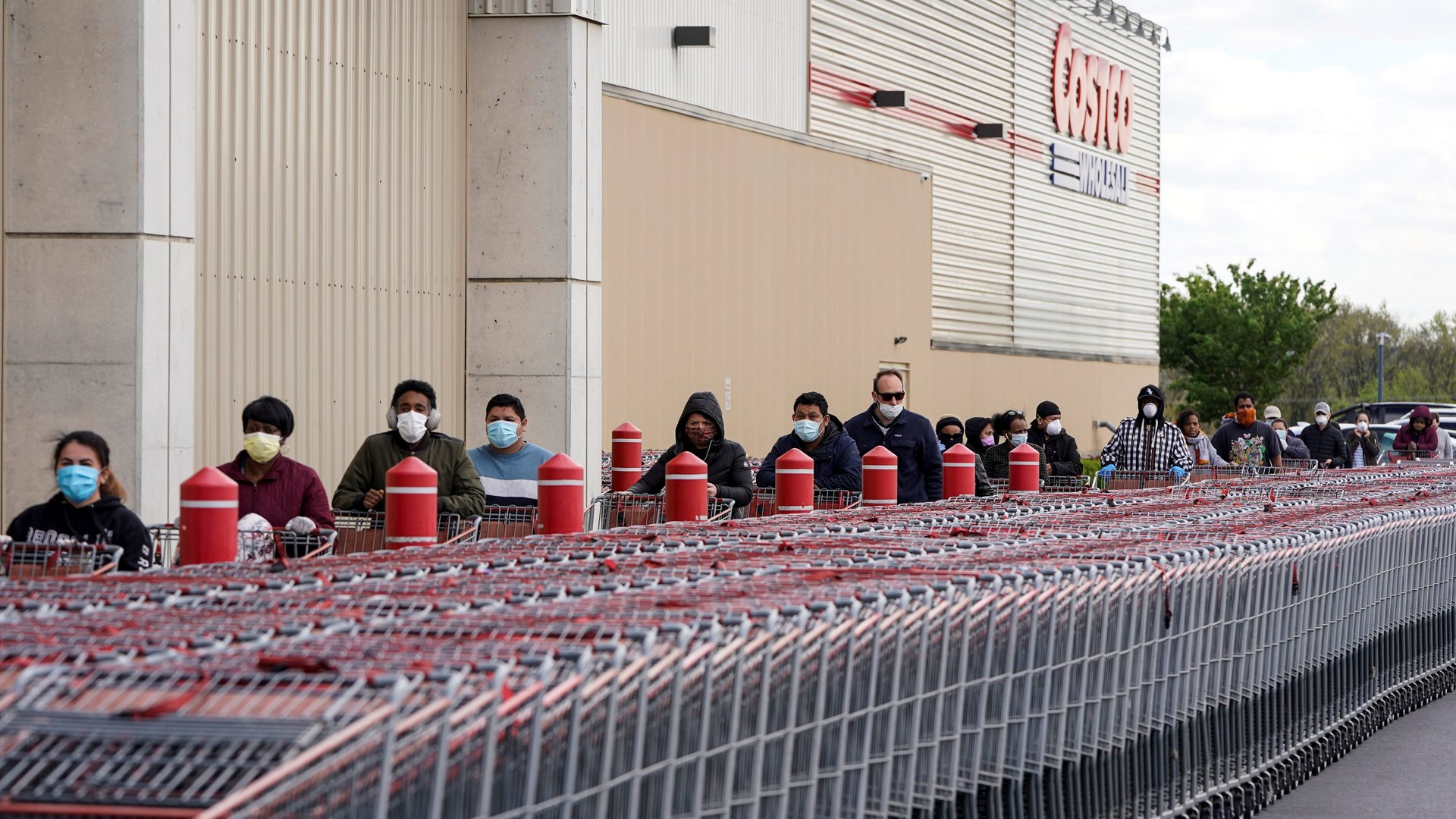The pandemic’s impact on US discount and mega-retailers, in five charts
The coronavirus pandemic has ripped a hole in America’s retailers, but the country’s budget chains and mega-stores have fared much better.


The coronavirus pandemic has ripped a hole in America’s retailers, but the country’s budget chains and mega-stores have fared much better.
Chains such as Walmart and Dollar Tree have been able to keep their doors open because they sell essential items, and they’ve found that even though more than 40 million people have sought unemployment insurance since the pandemic started, many shoppers are still surprisingly flush with cash.
Americans were issued $1,200 stimulus checks as part of the Cares Act, and unemployment insurance has been topped up with an additional $600-per-week supplement that lasts through the end of July. Some unemployed workers, for now, are earning more to stay home than they would get from a job.
“What our customer has right now is money in their pocket,” said Dollar Tree CEO Gary Philbin in an earnings call on May 28. “That’s obviously a tailwind for anybody that has doors open.” The company operates the discount-store brands Dollar Tree, Family Dollar, and Dollar Tree Canada.
But running a store or a warehouse during a pandemic isn’t cheap. As lockdowns are lifted, companies are spending on cleaning, plexiglass barriers, and personal protective equipment, like gloves and face coverings, for staff. Costco said it spent an extra $283 million in the most recent quarter on things like barriers, sanitation, masks, and higher wages, while Amazon’s CFO said the company spent $600 million in Covid-19-related costs in the first quarter, a figure it warned could balloon to more than $4 billion in the second quarter.
That’s helped make “enhanced cleaning” a thing now—the expression made its debut in company transcripts in March and accelerated in usage in May, according to data compiled by Sentieo. One example: “We continue to provide store teams with hand sanitizer and cleaning supplies, for high-frequency enhanced cleaning protocols,” Dollar Tree president Michael Witynski said on May 28.
Of course not everyone is selling. Retailers’ inventories-to-sales ratio is signaling the biggest glut of inventory in more than a decade. That’s a problem for fashion retailers especially, since they have seasonal items with a short shelf life. To clear their excess inventory and make room for new collections, they’ll almost certainly have to lean heavily on discounts, which means that even if they’re moving product, they’re making less money per sale.
Nordstrom, the 119-year-old fashion retailer, began reopening its stores in early May and says about 40% of its fleet is doing business again. The company’s executives say markdowns are to be expected this summer.
“The likelihood of a strong promotional month or two is high,” company president Peter Nordstrom said May 28 in an earnings call. “It’s, again, fair to assume that that environment is going to be highly promotional, and we’re going to have to respond in kind to take competitive markdowns. So that seems like the likely scenario in June and July as stores open up.”
Clothing retailers overall have been hit hardest by the crisis, since fashion is the sort of discretionary purchase many shoppers have put on pause. E-commerce and grocery retailers, on the other hand, have been among the few winners during the pandemic, benefitting from stay-at-home orders. Spending on do-it-yourself home improvement and gardening companies also eked out an increase in April from a year before, despite the disruption.
“What we’re finding is, because people are at home, notwithstanding some of the economic things of layoffs and furloughs, people are buying things for the house,” Costco CFO Richard Galanti said in an earnings call on May 28.
These dynamics have created a wide gap between US retail’s winners and losers in the past few months. On the one end are companies such as Amazon, Target, and Walmart, which have seen sales rise as Americans have stocked up on groceries, cleaning products, and other items. Not only were they able to keep stores open despite state lockdowns (since they’re deemed essential retailers) but they also enjoyed a surge in online sales. On the other end are retailers selling non-essentials who had to close stores, and in some cases, such as TJ Maxx and Burlington, didn’t have strong e-commerce operations to lean on.
Target said sales through its drive-up service, its delivery service called Shipt, and its online offerings all soared during the first quarter. “Target orders fulfilled by Shipt, and overall digital, were higher in the first quarter of 2020 than in the first three quarters of 2019 combined,” Target chief operating officer John Mulligan said May 20 in an earnings call. “In April, sales on drive-up increased nearly 1,000% compared with a year ago.”
For a number of companies, such as J.Crew, JCPenney, and Neiman Marcus, the pressure has been too much, forcing them into bankruptcy.
Among those that do survive the immediate crisis, some are likely to bounce back quickly. Off-price fashion chain TJ Maxx, for instance, could have a strong return as stores reopen and it gets a torrent of new inventory from struggling clothing retailers. Others that fared well in the pandemic could further consolidate power, as in the case of giants such as Amazon and Walmart.
But others that were already in distress before the pandemic will continue to suffer—meaning the gap between winners and losers is only likely to grow.